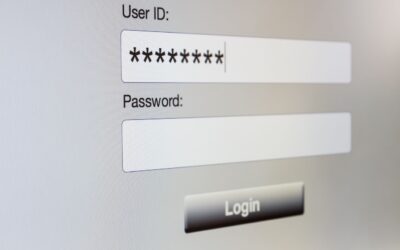In terms of disaster recovery, 2017 was not a good year. Considering this, the fact that studies show 30% of businesses had no disaster recovery strategy in place as of last year is even more worrying. What does that mean, exactly? In short, there is a lot of money being lost. On average, a business loses anywhere from $926 to $17,244 per minute of downtime. That’s right—not per day, not per hour, but per minute.
So, how do you protect yourself? Simply put, you need to have a solid business continuity plan. Many small to medium-sized business owners have asked us over the years, “What are the essential elements of this plan?” Before starting, it’s good to review what disaster recovery and business continuity mean for your business. Then you can begin to learn the most important pieces of this process.
Defining the essentials
It’s safe to assume that almost all businesses today use computers and data in their day-to-day operations. Let’s also assume your business processes include accounting, and the company uses computers with business software. This basic checklist will help identify the technologies you can quickly set up to help you recover from business disruptions.
Uninterruptible power supply (UPS)
Blackouts, brownouts and power spikes account for 35% of unexpected downtime and can cause physical damage to computer hardware, resulting in lost or corrupted data. A quality UPS will provide a steady stream of electric current, protecting your hardware from damage due to power spikes, while a battery backup provides temporary power during blackouts. You should have a UPS for any computer running critical applications or storing important data.
Having a UPS for a server is a must—and it should be a smart UPS. That means it includes software that performs an orderly, automatic shutdown of the server after five to 10 minutes, before the battery backup runs down.
Local data backups
The first thing you’ll need to create your local data backups is a backup drive (an external USB drive is a common choice). Next, you’ll want to automate the backup. For this stage of the process, we recommend an image-based backup software that will take incremental snapshots of the entire computer or server, including the operating system and all applications and data. This way, everything can be wholly restored to the same or another device, which saves a ton of time and money when any computer is lost.
It’s important to know that if you’re backing up to an external drive, you should have more than one. We recommend rotating these regularly and always storing the drive(s) not being used in a fireproof box—preferably in an offsite location.
Hosted data backups
Backing up to the cloud is even better than creating redundant backup drives. Why? Rotating drives is dependent on people taking time away from other tasks—and when they don’t, they make the business vulnerable.
The most complete data backup system combines the two methods. In this setup, locally redundant drives allow for speedy backup and recovery from the most common disruptions, while image-based backups stored securely in the cloud facilitate recovery from more wide-ranging disasters.
Redundant internet
Speaking of the cloud, many small businesses have completely moved their operations to it. But if all your applications and data reside in the cloud, your business is dead in the water if your internet goes down. Along with many of our clients, MyITpros has two internet connections, with hardware configured to fail-over automatically when the connection goes down.
Paying for both business fiber and cable connections may be too much for your small startup, but using a wireless hub from one of the cellular carriers can get your computer and up to five others back online in a few minutes.
Hosted VoIP
Hosted VoIP is fantastic in certain situations and overkill in others, but for business continuity, it’s hard to beat. Consider this scenario: Your office is destroyed, and because your phone system was in the office, it will likely be a while before you’re able to talk with clients and vendors the way you want to. Conversely, if you use hosted VoIP from the right provider that’s set up the right way, business resumption can be seamless.
What’s next?
Putting together a plan to ensure your company’s core operations can continue without stoppage in the event of a disaster is well worth the time and investment. Don’t shy away from this because you assume the likelihood of your business going down is slim or because the task at hand seems daunting, and keep in mind that you can do one of two things:
- Create your plan yourself. MyITpros has put together a free business resumption plan template to make the process of documenting what to do easier and more organized. You should work on this plan with your company leadership, review it with your organization and save it somewhere that’s easily accessible in a crisis.
- Work with a managed services provider (MSP). While it’s possible to create a cohesive plan on your own, there’s no harm in enlisting a professional for something this mission-critical. An IT support company knows the process that needs to be followed and can make the best recommendations for the specific needs of your business. At MyITpros, your account manager will work with you to create a thorough plan for your staff.
The most important thing to remember is that business continuity is an ongoing process. With this in mind, be sure to periodically revisit your resumption plan and make adaptations as your business grows and changes.



